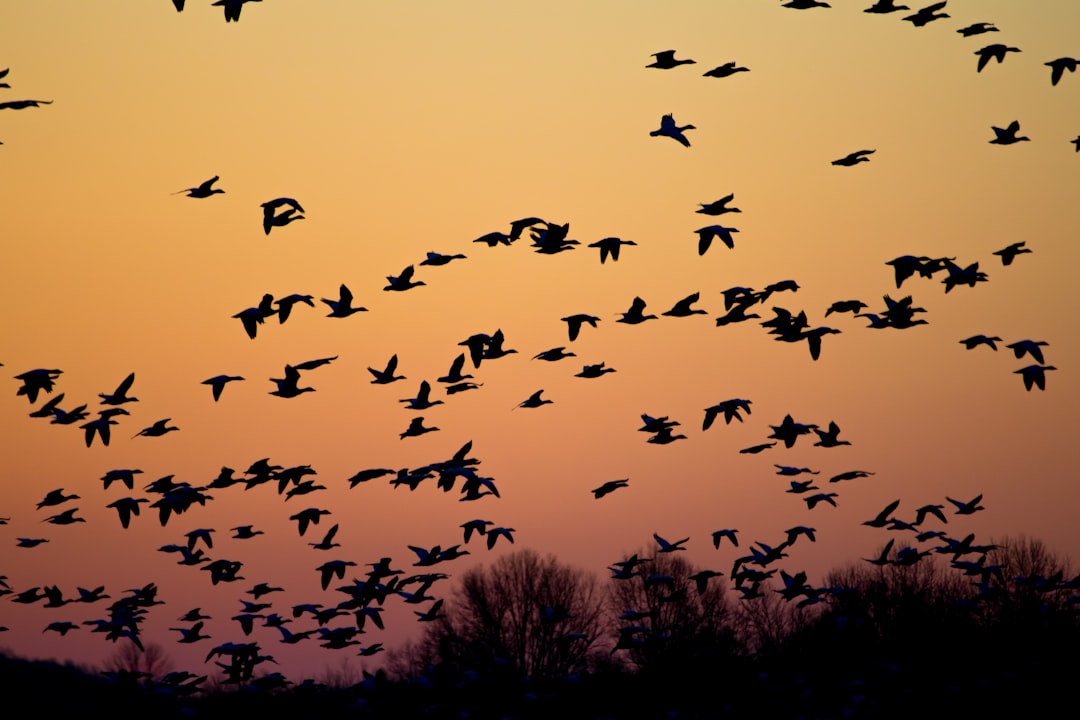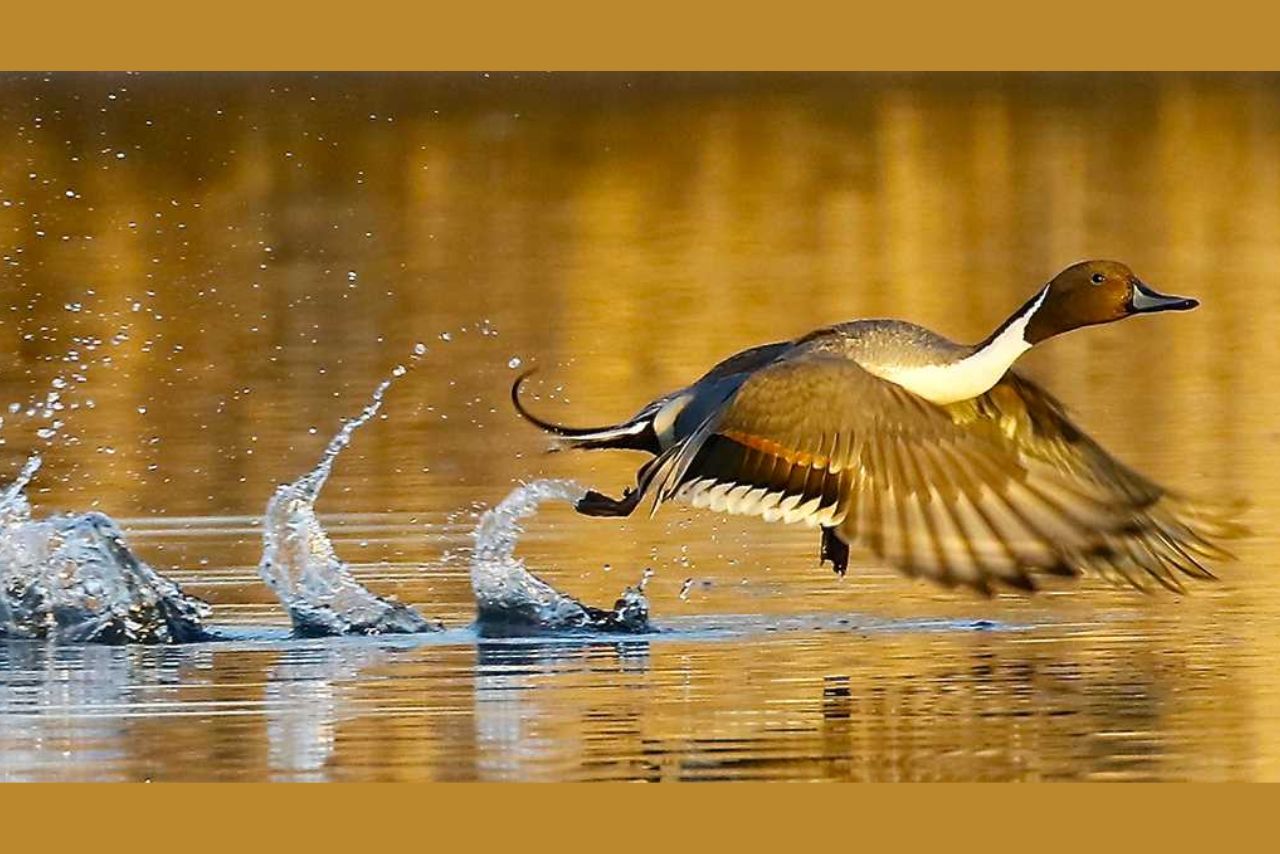Ducks are a common sight in many bodies of water, and their graceful movements in the air and water can be quite fascinating to observe. One question that often comes to mind when watching ducks is How Fast Can Ducks Fly?
Ducks are known for their swift and agile movements, but just how fast can they go?
In this article, we’ll explore the different factors that affect duck flight speed, and we’ll take a closer look at some of the fastest duck species in the world.
Ducks are capable of flying at varying speeds depending on factors such as their species, age, and weather conditions.
On average, ducks can fly at speeds of 40-60 miles per hour, with some species like the mallard capable of reaching speeds of up to 65 miles per hour. Factors like wind direction and speed can also affect their flight speed.
Anatomy Of A Duck
Ducks are characterized by their short, sturdy bodies, broad wings, and webbed feet. They have a streamlined body shape that allows them to move quickly through the air and water.
Their wings are designed for powerful strokes, which help them to take off and fly. Ducks also have a waterproof layer of feathers that helps them to stay dry and buoyant while swimming.
In terms of size, ducks range from small species like the teal, which measures just 12 inches in length, to larger species like the mallard, which can measure up to 26 inches in length.
Most ducks have a colorful plumage, with males often displaying brighter colors than females.
Ducks also have specialized bills that are adapted for their feeding habits. Some species have bills that are flat and wide, which help them to filter food from the water.
Others have bills that are sharp and pointed, which allow them to catch and tear prey. Overall, the anatomy of a duck is well-suited for its aquatic and aerial lifestyle.
Understanding The Basics Of Duck Flight
Understanding the basics of duck flight can help us appreciate their incredible abilities in the air and water. Ducks are able to take off from both land and water, and they use powerful wingbeats to gain altitude.
Once in the air, they can fly for extended periods using a combination of flapping and gliding. Ducks are also capable of flying at high altitudes, with some species known to fly as high as 21,000 feet.
How Fast Can Ducks Actually Fly?
While ducks are known for their impressive flight abilities, they don’t always fly at top speeds. Factors like weather conditions and migration patterns can affect their flying speed.
On average, ducks can fly at speeds of 40-60 miles per hour, with some species capable of reaching up to 65 miles per hour.
The fastest duck species in the world is the canvasback duck, which can reach speeds of up to 72 miles per hour during flight.
How Far Can Ducks Fly?

Ducks are capable of flying long distances during migration, with some species traveling thousands of miles each year.
The distance that ducks can fly largely depends on their species, age and overall health.
On average, ducks can fly up to 800 miles without stopping, while some species like the mallard can fly up to 1000 miles during migration.
How Long Can Ducks Fly?
Ducks are capable of flying for long periods, but they generally don’t fly continuously. During migration, ducks will fly for several hours before stopping to rest and feed.
In general, ducks can fly for up to eight hours at a time before needing to rest. However, some species like the pintail have been known to fly continuously for up to 18 hours.
Can Ducks Fly Backwards?
While ducks can perform some impressive aerial maneuvers, flying backwards is not one of them.
Unlike hummingbirds, which are able to fly backwards by rapidly flapping their wings in a figure-eight motion, ducks are not capable of this feat.
However, they are able to slow down and even hover in mid-air using their powerful wingbeats.
How Long Does It Take For A Duck To Fly?
The time it takes for a duck to fly largely depends on the distance they need to cover and their flying speed.
On average, ducks can cover distances of up to 800 miles without stopping, but they generally don’t fly at top speeds for extended periods.
During migration, ducks may take several days or even weeks to complete their journey, with frequent stops along the way to rest and feed.
What Time Do Ducks Fly The Most?

There is no specific time when ducks fly the most, as their flight patterns depend on various factors such as breeding season, migration, weather conditions, and feeding habits.
However, in general, ducks are more active during the early morning hours and late afternoon when they search for food and water.
During migration season, ducks may fly during both day and night to cover long distances.
It’s important to note that many species of ducks are protected by law, and hunting or harming them is illegal in many countries.
Flying Ducks list
1. Common Pochard: This duck can be found in freshwater habitats such as lakes, ponds, and rivers. Its distinctive red head and black breast make it easy to identify.
2. Mandarin Duck: Known for its vibrant colors and unique appearance, the Mandarin Duck is often kept in captivity as a decorative bird. In the wild, it can be found in East Asia.
3. Mallard: The most common duck species in the world, the Mallard can be found in a variety of habitats, including wetlands, rivers, and lakes. The male has a distinctive green head and yellow bill.
4. Wood Duck: This colorful duck can be found in wooded areas near water. The male has a distinctive iridescent green head and red eyes, while the female has a grayish-brown head and white eye-ring.
5. Northern Pintail: This duck can be found in wetlands and grasslands throughout North America. The male has a long, pointed tail and a distinctive brown and white striped head.
6. American Wigeon: This duck can be found in wetlands and grasslands throughout North America. The male has a distinctive white forehead and green stripe above the eye.
7. Gadwall: This duck can be found in wetlands and grasslands throughout North America. The male has a distinctive gray and black mottled pattern on its body.
8. Northern Shoveler: This duck can be found in wetlands and grasslands throughout North America. The male has a distinctive long, shovel-shaped bill.
9. Canvasback: This duck can be found in freshwater habitats such as lakes and rivers. The male has a distinctive red head and black breast.
10. Redhead: This duck can be found in freshwater habitats such as lakes and rivers. The male has a distinctive red head and gray body.
Do Ducks Sleep When They Fly?
Ducks do not sleep while flying. During migration, they will take short naps while resting on the water or land.
However, when they are in flight, they keep their eyes open and alert for any potential dangers.
Ducks have a unique way of sleeping, where one half of their brain remains awake while the other half sleeps. This enables them to rest and still remain aware of their surroundings.
Do Ducks Learn To Fly On Their Own?

Yes, ducks learn to fly on their own. Ducklings typically start to fly when they are around two to three months old.
Before that, they rely on their parents for protection and guidance as they learn how to swim, dive, and hunt for food.
Once they are ready to fly, the young ducks will take off from the water or land and practice flapping their wings until they gain enough height and speed to stay in the air.
Over time, their flight skills improve as they become more confident and experienced in navigating their environment.
Do Ducks Get Tired Of Flying?
Yes, ducks can get tired of flying. Flying is a physically demanding activity that requires a lot of energy and effort.
During migration season, ducks may fly for several days or even weeks without stopping, which can be exhausting.
To conserve their energy, ducks will often fly in formation with other ducks to reduce wind resistance and take turns leading the flock.
This allows each duck to rest its wings and recover some energy while still making progress towards their destination.
Factors That Influence Duck Flight Speed
Here are the factors that influence duck flight speed:
- Species: Different duck species have varying body sizes and shapes, affecting their aerodynamics and flight speed.
- Age and Gender: Adult male ducks are generally faster than females and juveniles due to their larger body size and stronger muscles.
- Wind: Strong headwinds can slow down ducks, while tailwinds can increase their speed.
- Altitude: Higher altitudes create thinner air, making it harder for ducks to fly at their maximum speed.
- Temperature: Ducks fly faster in cooler temperatures since the air is denser, providing more lift.
- Flight distance: Ducks tend to fly faster when covering short distances, while they conserve energy for longer flights.
- Hunting pressure: Ducks that have been hunted frequently tend to fly faster and at higher altitudes to avoid being shot.
By keeping these factors in mind, you can better understand and appreciate the impressive flight abilities of these amazing birds.
Canvasback Duck With High Flight
That’s correct! The Canvasback is one of the fastest flying ducks and can reach speeds up to 70 miles per hour. This makes them one of the most impressive ducks to watch in flight.
Last Talk: How Fast Can Ducks Fly?
How Fast Can Ducks Fly? Ducks are fascinating birds with incredible abilities to fly long distances and navigate their environments. They do not sleep while flying and learn to fly on their own when they are around two to three months old.
Ducks can get tired of flying, but they conserve energy by resting whenever possible and flying in formation with other ducks during migration season.
Factors that influence duck flight speed include species, age and gender, wind, altitude, temperature, flight distance and hunting pressure.
The Canvasback is one of the fastest flying ducks and can reach speeds up to 70 miles per hour. Understanding these aspects about ducks can help us appreciate their beauty and remarkable capabilities even more.
FAQs
Which Duck Species Is the Fastest Flying?
The Canvasback duck is one of the fastest flying ducks, with speeds reaching up to 70 miles per hour.
Do Male Ducks Fly Faster than Females?
Yes, male ducks are generally faster than females due to their larger body size and stronger muscles.
Does Wind Affect Duck Flight Speed?
Yes, strong headwinds can slow down ducks, while tailwinds can increase their speed.
How Does Temperature Affect Duck Flight Speed?
Ducks fly faster in cooler temperatures since the air is denser, providing more lift.




